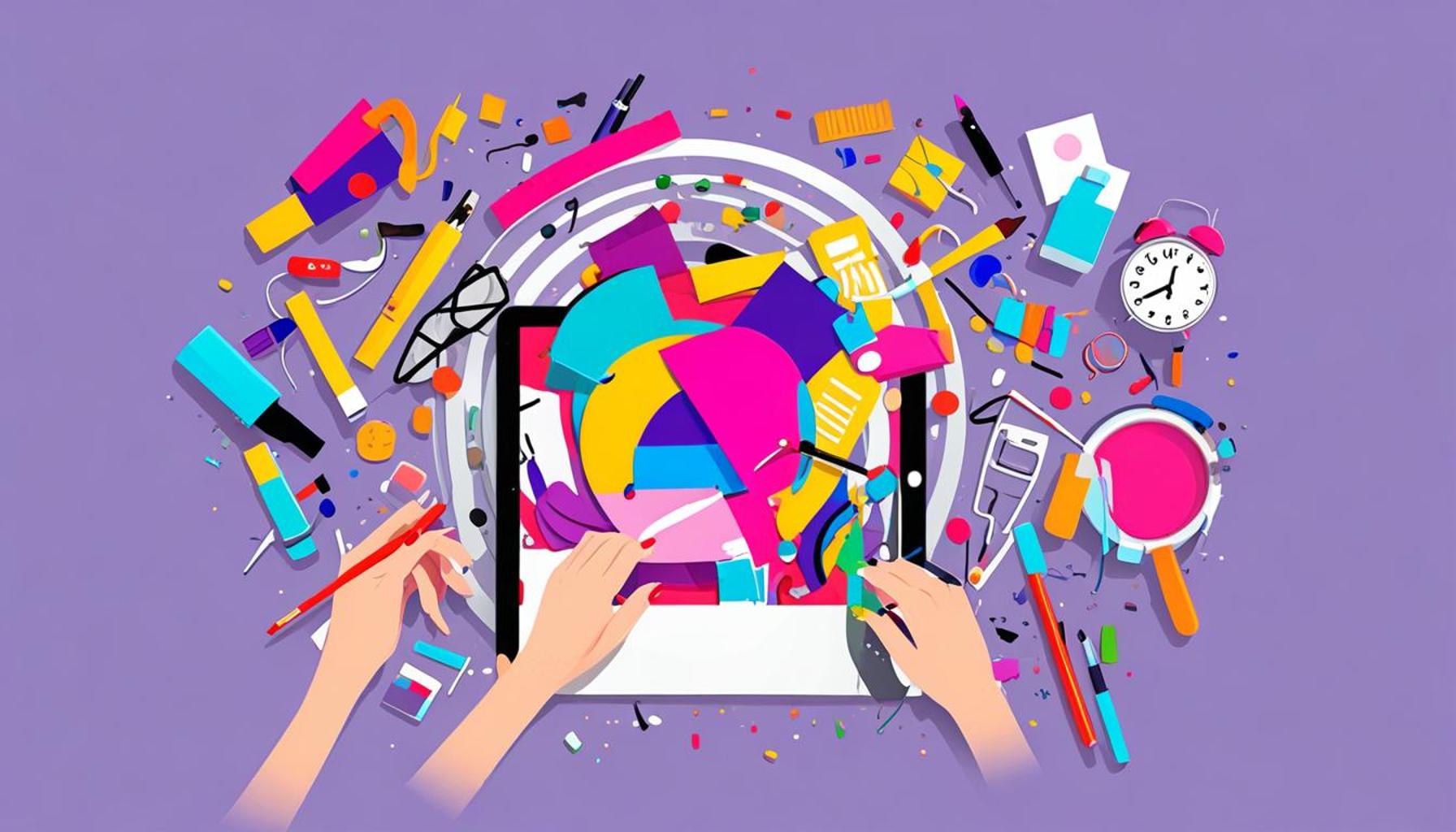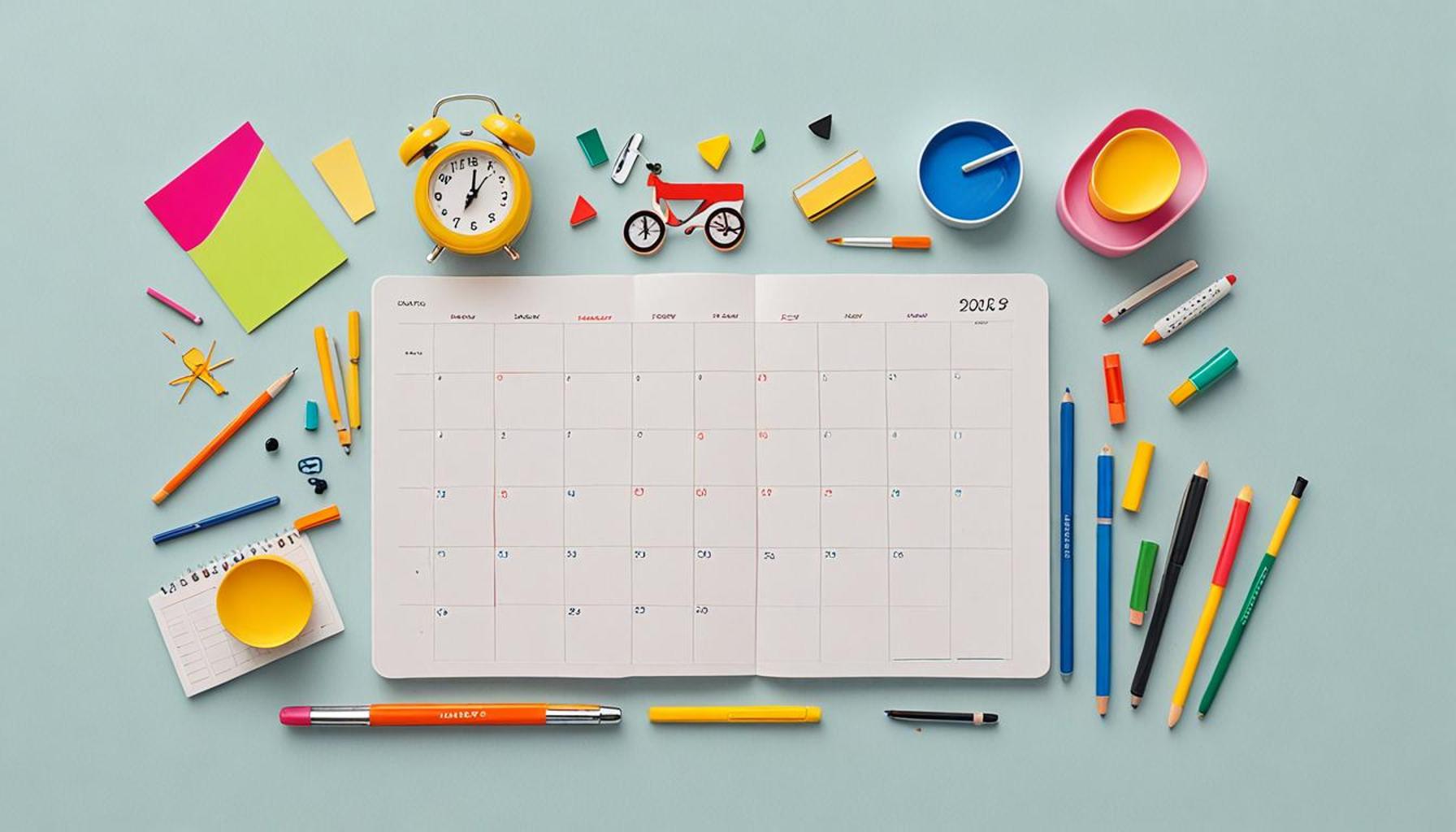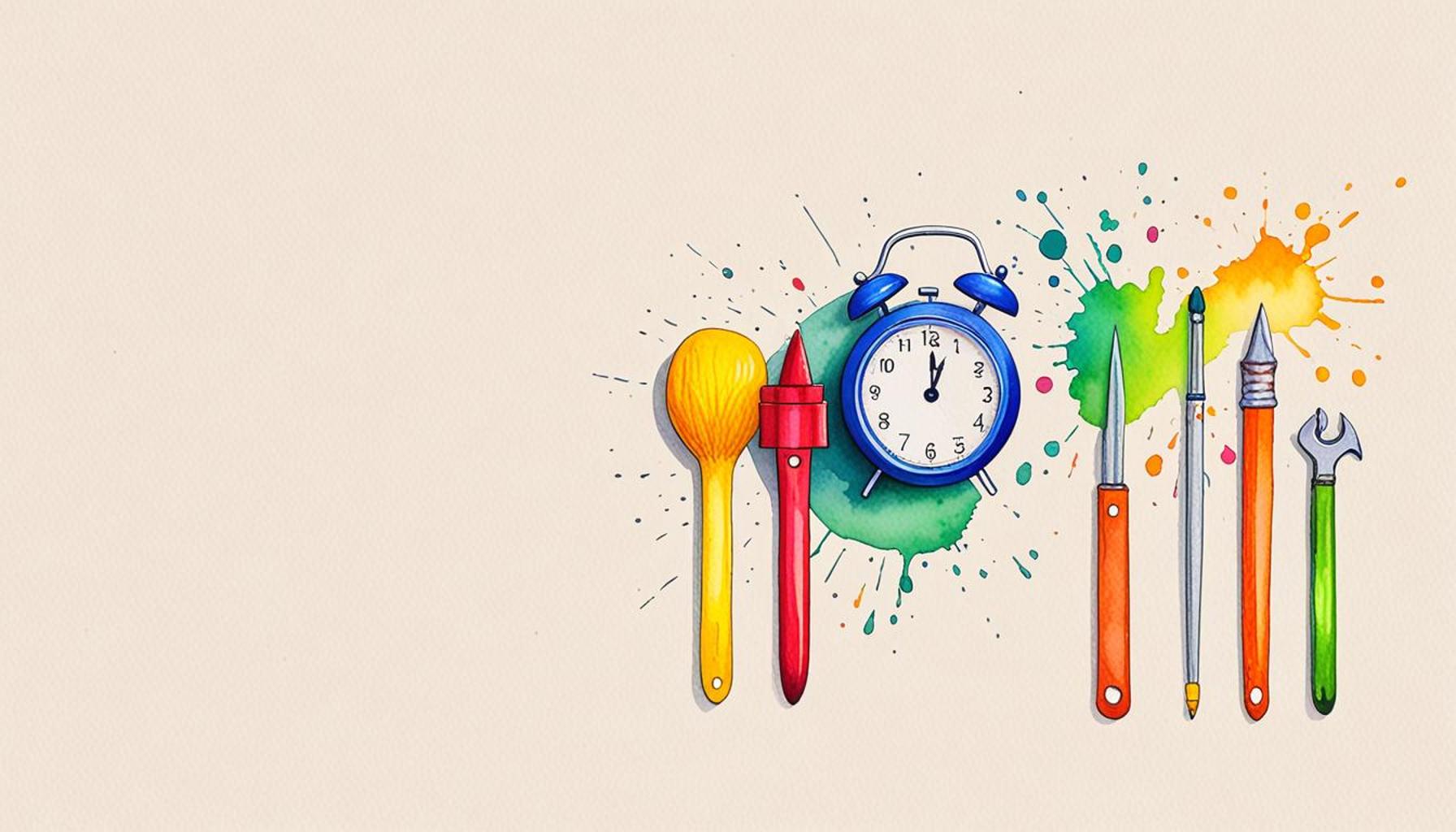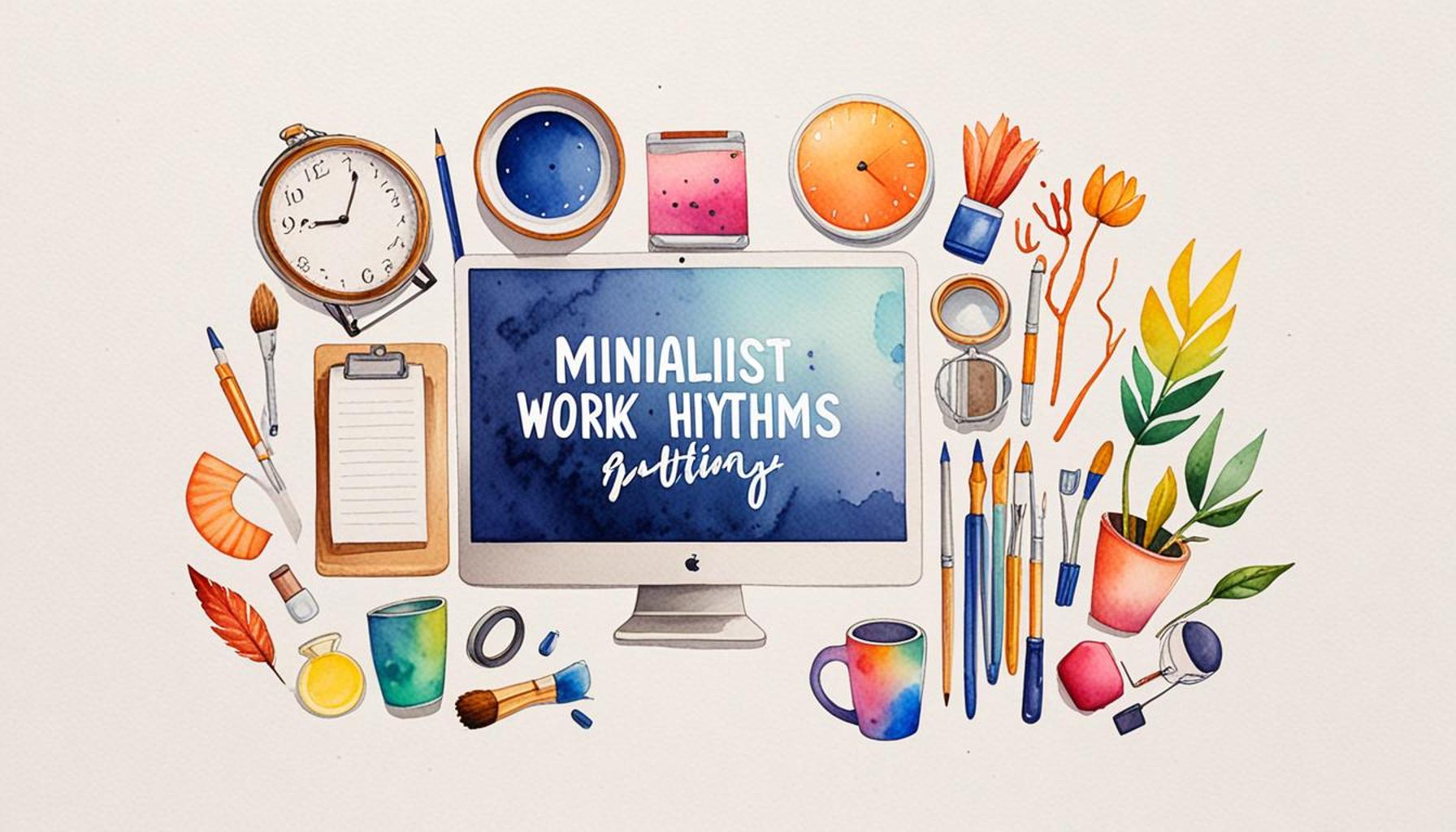Deconstructing Multitasking: Focusing on the Essentials with Minimalism

Understanding the Tension Between Multitasking and Minimalism
In our contemporary society, the pressure to be constantly productive and efficient has redefined what we consider success. In this quest, multitasking has emerged as a revered skill; however, what if this notion of accomplishment is fundamentally flawed? While we may pride ourselves on our ability to attend to several tasks simultaneously, research indicates that this behavior can actually impede our effectiveness and dilute our potential. A startling statistic reveals that multitasking can cut overall productivity by up to 40%, ultimately leading to increased stress and cognitive overload.
Given this information, it’s becoming increasingly clear that adopting a more streamlined approach—often characterized as minimalism—could be the key to unlocking our true productivity potential. Minimalism is centered around the principles of prioritizing quality over quantity, eliminating distractions that do not add value, and fostering intentionality in our daily activities. These concepts encourage us to focus not on doing more but on doing what truly matters.
Core Principles of Minimalism
- Prioritizing quality over quantity: Emphasizing the importance of producing fewer items or outputs but ensuring they have a higher impact or significance.
- Eliminating distractions that do not add value: Recognizing and removing unnecessary tasks, obligations, or technologies from our routines can drastically improve focus.
- Encouraging intentionality in daily activities: Every task we engage in should align with our personal and professional goals, allowing us to channel our energies effectively.
Implementing minimalism in our work and personal lives presents an invaluable opportunity to reconsider our daily practices. For instance, individuals can:
- Identify and remove non-essential tasks: This could mean decluttering calendars by eliminating meetings or engagements that do not contribute to core objectives.
- Focus on single-tasking for greater effectiveness: Employing strategies such as the Pomodoro technique can enhance concentration by promoting work intervals followed by short breaks.
- Create a more peaceful and productive environment: A tidy workspace can significantly reduce cognitive distractions, fostering clearer thinking.
As we further explore this topic, we will break down the myth that multitasking is synonymous with success, uncovering how adopting minimalistic principles can enhance focus and efficiency. In this journey, you will find insights that can lead you toward achieving not only clarity and productivity but also a more gratifying life. It’s time to reshape our understanding of work and how we engage with our myriad responsibilities.
DISCOVER MORE: Click here for insights on mindful living

The Harmful Effects of Multitasking
As we dive deeper into the debate surrounding multifaceted work habits, it’s essential to grasp the implications of multitasking on cognitive function and overall efficacy. A study published in the journal Cognitive Science found that switching between tasks can cause a decline in productivity equivalent to working for an entire day without sleep. The brain is not wired to handle multiple streams of information at once; rather, it excels in focusing on one thing at a time. This insight begs the question: why do we continue to glorify multitasking as a hallmark of efficiency?
The consequences of multitasking extend beyond mere productivity losses. When individuals attempt to juggle multiple responsibilities, they often find themselves experiencing heightened levels of stress and anxiety. This phenomenon is correlated with the concept of task-switching costs, a term used to describe the mental resources depleted each time a person shifts from one activity to another. Cognitive load increases, impairing decision-making abilities and leading to frequent errors.
Understanding the Minimalist Mindset
Minimalism offers a compelling alternative by urging individuals to strip away the non-essential and concentrate on what truly matters. In adopting a minimalist mindset, we not only redefine productivity, but we also foster a sense of clarity and purpose. Here are key principles that underscore the value of minimalism in combating the pitfalls of multitasking:
- Simplification: Reducing the number of tasks and commitments allows individuals to channel their focus on what is genuinely important. By embracing simplicity, we engage more deeply with our work and personal lives.
- Mindfulness: Practicing mindfulness helps us become aware of our thoughts and actions, allowing us to engage more fully in single tasks rather than juggling numerous distractions. Mindfulness techniques can include meditation, attention exercises, and reflective practices.
- Intentional goal setting: Establishing clear, attainable goals aligned with personal values enables individuals to prioritize effectively. This fosters a greater sense of motivation and achievement, as one can see tangible results from dedicated efforts.
By employing these principles within our daily routines, we can cultivate an environment that supports focus and reduces the allure of multitasking. Consider how refocusing on quality, clarity, and purpose can be a game-changer in both work and life pursuits.
In the following sections, we will examine practical strategies that leverage minimalism to enhance productivity while dispelling the myth that success is rooted in the ability to multitask. As we continue, prepare to discover transformative practices that empower you to embrace a more methodical and rewarding approach to life’s responsibilities.
| Advantage | Description |
|---|---|
| Increased Productivity | Focusing on singular tasks prevents attention fragmentation, leading to faster completion of essential jobs. |
| Enhanced Clarity | Minimalism fosters a cleaner workspace and mindset, making it easier to prioritize what truly matters. |
| Reduced Stress Levels | By minimizing distractions, individuals can experience lower anxiety and a more serene approach to tasks. |
| Improved Decision-Making | It simplifies choices by reducing overwhelming options, leading to more confident and decisive actions. |
The concept of minimalism extends beyond aesthetics; it influences cognitive processes significantly. When one embraces minimalism in both workspaces and daily routines, the complexities of multitasking dissolve. Individuals often find that by honing in on a singular focus, they can engage more deeply with their tasks. Whether it’s through a decluttered desk or streamlined to-do lists, every element contributes to the overarching goal of simplicity and efficiency.Moreover, embracing minimalism encourages individuals to regularly assess what is genuinely essential in their lives, filtering out the noise. This not only leads to enhanced productivity but also nurtures a state of well-being as it eliminates unnecessary stress and anxiety. In nurturing clarity, individuals become equipped to tackle their responsibilities with renewed energy and vision, which is a vital component in today’s fast-paced environment. By adopting a more minimalist approach, the potential for personal and professional growth is immense, paving the way for innovative solutions born out of focused thought and deliberate action, truly emphasizing the ‘Focusing on the Essentials’ ethos.
DIVE DEEPER: Click here to learn how intentional design can transform your lifestyle
Practical Strategies for Embracing Minimalism
Transitioning from a multitasking mindset to one grounded in minimalism may seem daunting, but it is entirely achievable through deliberate practice and small, consistent changes. Understanding that each task we embrace carries weight in our cognitive load, it becomes critical to adopt methods that streamline our focus and energize our productivity. The following strategies serve as a roadmap for anyone eager to embrace minimalism and enhance their effectiveness:
1. Prioritize with the Eisenhower Matrix
Developed by former U.S. President Dwight D. Eisenhower, the Eisenhower Matrix is a powerful tool for distinguishing between what is urgent and what is important. By categorizing tasks into four quadrants—urgent and important, important but not urgent, urgent but not important, and neither urgent nor important—you can allocate your time and energy to align with your goals effectively. This clarity allows you to say no to distractions and focus on what genuinely merits your attention.
2. Batch Similar Tasks
Another effective strategy is to batch similar tasks together, which minimizes context-switching and leverages your brain’s capacity for focused behavior. For instance, set aside specific times for answering emails, returning phone calls, or completing administrative work. By clustering similar activities, you empower yourself to immerse fully in each task, ultimately enhancing efficiency while reducing mental fatigue.
3. Implement Time Blocking
Time blocking involves allocating dedicated time slots for specific activities throughout your day. This focused approach allows for uninterrupted work on individual tasks, significantly improving concentration levels. For example, designate mornings for creative projects and afternoons for meetings or collaborative work. By clearly outlining when you’ll tackle responsibilities, you’re more likely to resist the temptation of multitasking.
4. Embrace Digital Minimalism
In this digital age, our devices often contribute to the allure of multitasking. Digital minimalism advocates simplifying your online interactions and curating your digital environment. This may involve decluttering unnecessary apps, organizing emails, or resisting the urge to check social media during work hours. By reducing digital distractions, we can cultivate a workspace that nurtures concentration and engagement.
5. Mindful Reflection and Review
Taking moments for mindful reflection is crucial in a minimalist approach. Allocate time at the end of your week to assess which tasks aligned with your goals and which may have led to wasted effort. Identify areas for improvement and adjust your upcoming week accordingly. Regular review not only enhances accountability but also reinforces your commitment to maintaining a minimalist lifestyle.
By integrating these strategies into your daily routine, you can effectively diminish the allure of multitasking and prioritize your essential tasks. Embracing minimalism paves the way for increased clarity, focus, and ultimately, greater satisfaction in both professional and personal pursuits.
As the notion of multitasking continues to pervade our culture, leveraging minimalism becomes a powerful counterbalance that leads to a more fulfilling and productive life. The next section will explore how the application of minimalism can further elevate our work and creativity, breaking free from the confines of overwhelming demands.
DIVE DEEPER: Click here to discover more about minimalism and sustainability
Conclusion: The Path to Productivity through Minimalism
In a world that often glorifies multitasking as a hallmark of efficiency, the journey towards minimalism offers a refreshing alternative, encouraging us to focus on the essentials. By systematically dismantling the multitasking myth, we uncover the profound benefits of concentrated effort—where clarity, productivity, and satisfaction converge. Engaging with strategies like the Eisenhower Matrix, batch processing, and mindful reflection helps us redefine our relationship with time and tasks, steering our energies towards what truly enriches our lives.
Moreover, embracing digital minimalism not only reduces visual and mental clutter but fosters an environment conducive to creativity and focus. This curated approach to our daily routines transforms how we interact with both our work and personal lives, allowing us to engage meaningfully with each task at hand. As we cultivate a mindset of intentionality, we empower ourselves to challenge societal norms surrounding productivity—realizing that true effectiveness is not a race but a journey of conscious engagement.
Ultimately, by embracing minimalism and prioritizing essential tasks, we can navigate our responsibilities with greater ease and fulfillment. This minimalist lifestyle prompts a critical evaluation of what matters most, fostering sustainable habits that enhance our overall well-being. As we continue to explore this path, let us remain open to the possibilities it presents, paving the way for a more focused, productive, and enriching existence devoid of the overstimulation of modern multitasking.


